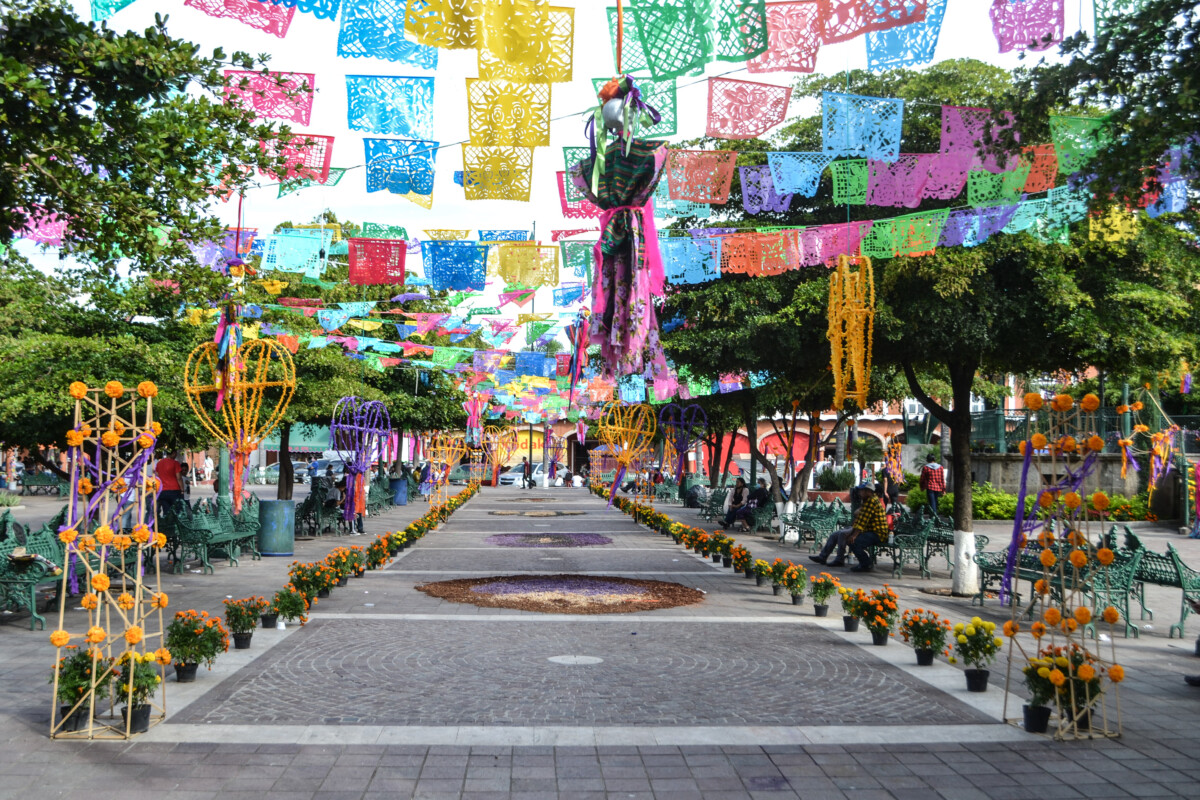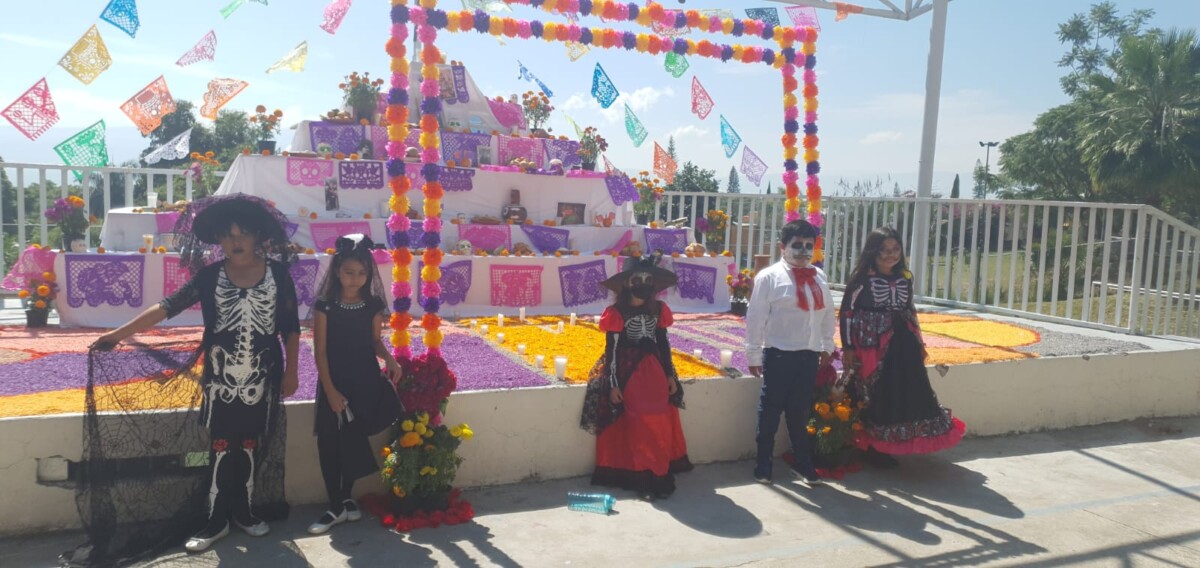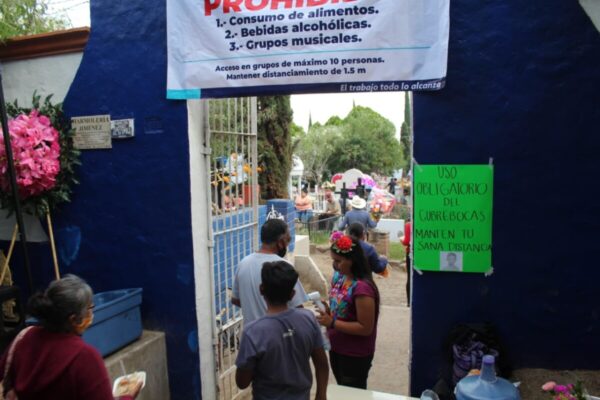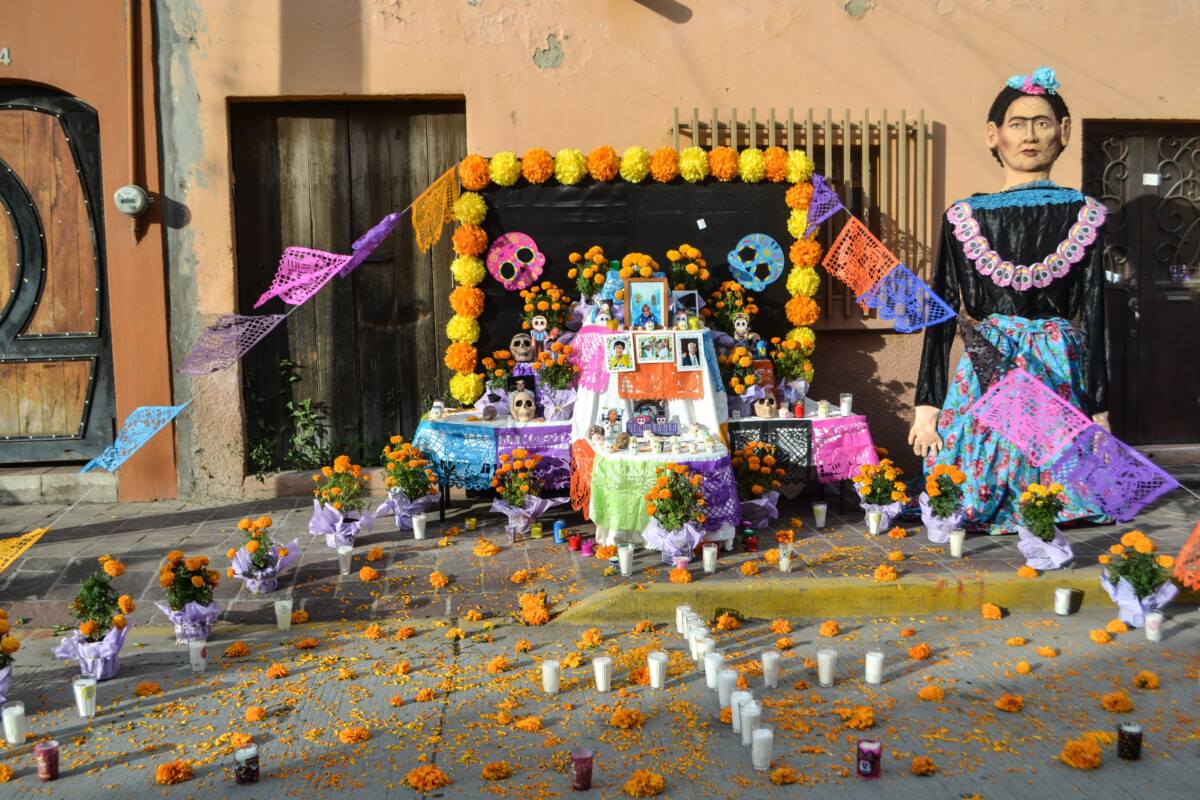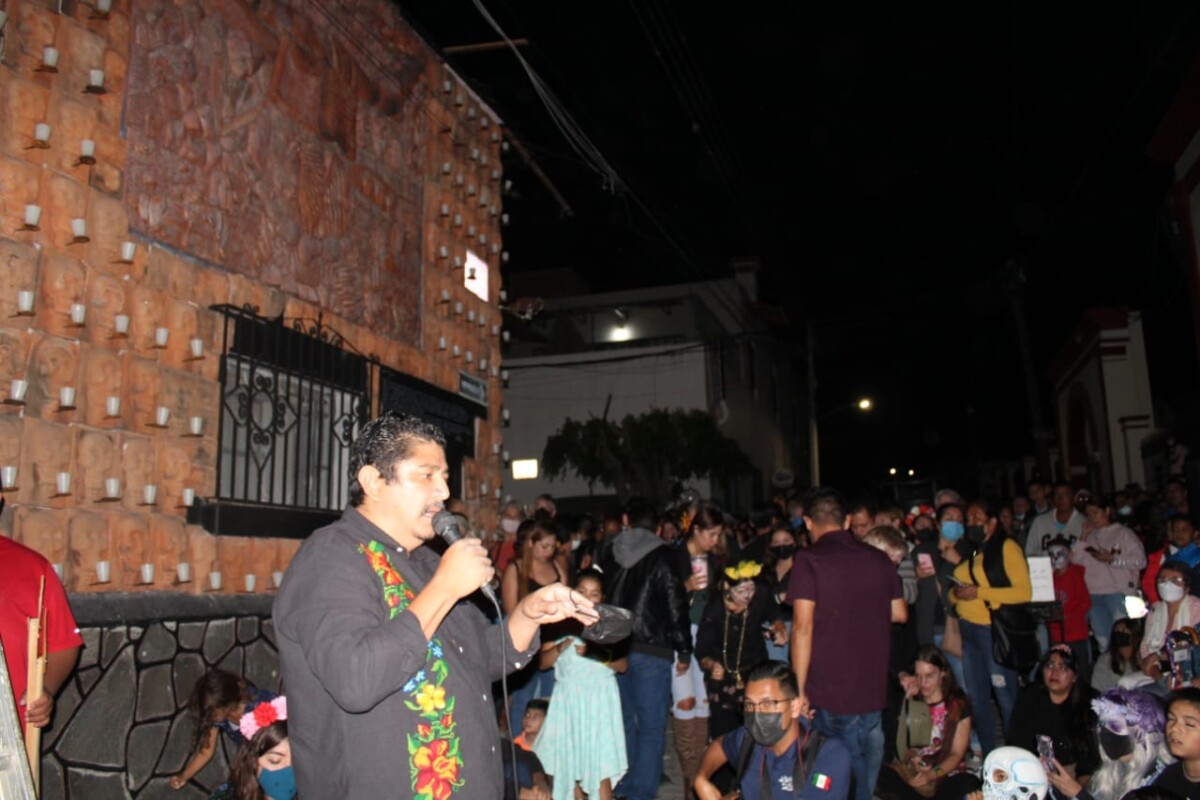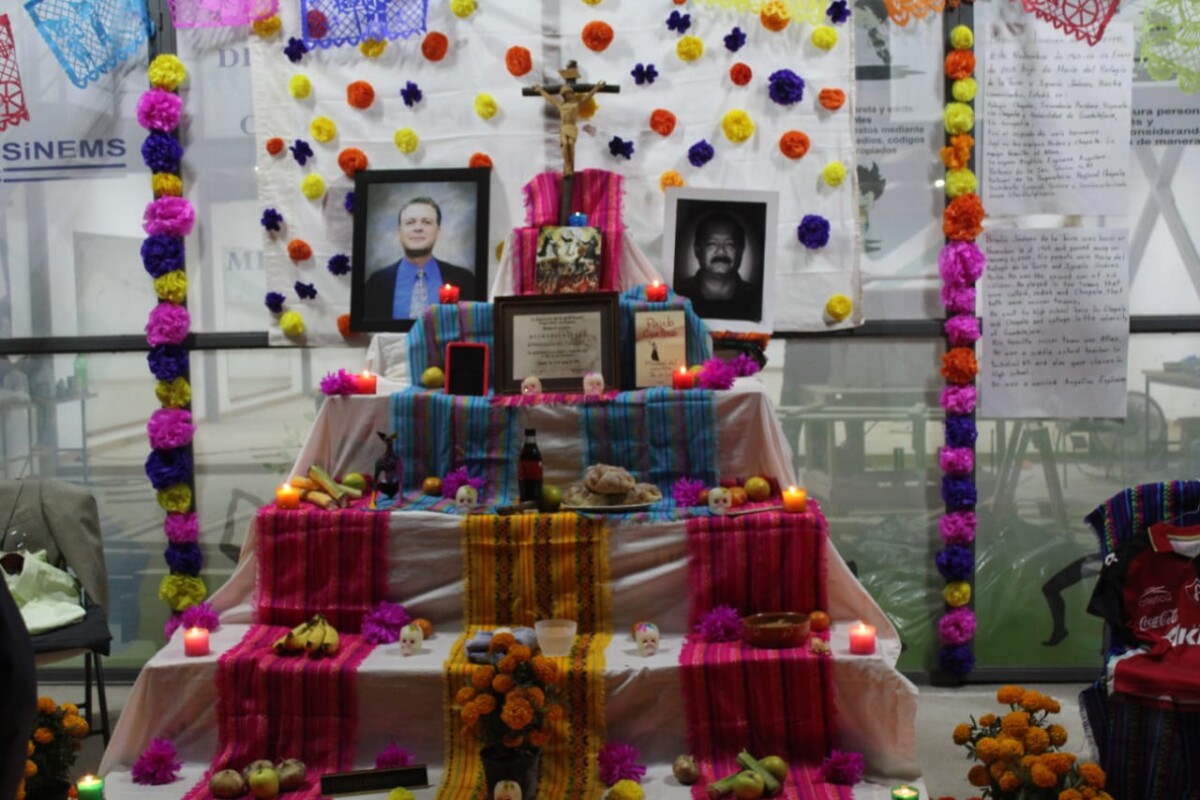tradiciones
Sí habrá celebración de Fiestas Patronales en Chapala
Templo de San Andrés Apóstol. Foto: Archivo.
D. Arturo Ortega. – Luego de la falta de respuesta por parte de la Mesa de Salud Jalisco para conceder la realización de reuniones para realización de celebraciones, el Ayuntamiento de Chapala anunció que sí se llevarán a cabo las fiestas patronales a realizarse en próximas fechas, pero con ciertas restricciones.
“El límite de horario será las 12:00 de la noche, aforo restringido a un máximo de personas (no especificado) y la instalación de filtros sanitarios, con responsabilidad para los gremios y grupos que organizan las festividades”, serán parte de las restricciones y responsabilidades.
Lo anterior se realizó por parte de las Autoridades Municipales, en atención a las diversas peticiones de los habitantes, grupos organizados y gremios, ha determinado que se conceden permisos para llevar a cabo eventos.
Entre las fiestas más esperadas en el municipio se encuentran las fiestas de San Andrés Apóstol, Santo Patrono del Pueblo Mágico de Ajijic que se celebrarán a través de un novenario que concluye el 30 de noviembre.
Paco Padilla gave a thrilling performance in Jocotepec’s main square for Day of the Dead festivities
Catrinas guarding the entrance to the Kiosk. Photo: Héctor Ruiz.
Musician and singer-songwriter, Paco Padilla gave a thrilling performance in the Main Square of Jocotepec for the event organized by the City Hall for the Day of the Dead.
Paco, who was part of Jocotepec’s cultural program, packed the plaza in a performance surrounded by local exhibits and displays.
Both the third rendition of the Walk of the Souls in San Juan Cosalá, as well as the first version of the festival and exhibition of altars, «Al fin, para morir nacimos» (In the end, we were born to die) in the municipal capital were well attended by both local and foreign visitors.
Jocotepec’s Main Square overflowed with costumes of different styles and colors common to the Day of the Dead, the smell of cempasúchil flowers that permeated the atmosphere. An altar commemorating all the victims of COVID-19 delight locals and tourists alike.
Translated by Sydney Metrick
Terranova Institute celebrates its Day of the Dead festival like never before
The preschool, elementary and high school students prepared a catwalk in which they wore their Catrinas, Catrines and skeleton costumes.
Instituto Terranova Writing Workshop. – The Terranova Institute celebrated the Day of the Dead like never before with the creation of an altar of the dead, a costume parade, folkloric dance numbers, and an aerial dance, among other activities. Nine art and sports workshops allowed all students to participate and watch the events.
The preschool, elementary and high school students prepared a catwalk in which they wore their Catrinas, Catrines and skeleton costumes. Chess students performed a game with living pieces.
Students of the music workshop enlivened the festival with songs, while the students of the Acrobatics workshop performed a surprising display of their rope skills. No less surprising was the aerial dance workshop.
Teachers and students made a six-level altar featuring a colorful sawdust mat, floral offerings, pan de muerto, sugar skulls, different dishes, and the typical papel picado, as well as photographs of loved ones.
Translated by Elisabeth Shields.
The Monumental Altar of San Juan Cosalá is intentionally set on fire
For the second year in a row, the large altar on top of the Quiosco de San Juan Cosalá was set on fire. Photo: Courtesy.
Héctor Ruiz Mejía: For the second consecutive year, the Day of the Dead monumental altar on the Kiosk of San Juan Cosalá was set on fire, although this year, unlike last year, the blaze was caused intentionally, according to Luis Guzmán coordinator of the November 1 «Paseo de las Ánimas» event.
Although the identity of the culprits is known, their names have not yet been officially released, said one of the participants of the «Paseo de las Ánimas» who preferred to remain anonymous. Furthermore, according to Luis Guzmán, the organizers were unaware of the fire that broke out in the early hours of November 2nd until the following morning.
«This is not only an offense to me and my team, but to the entire community, since it was the residents themselves who helped to decorate and make the festival a reality,» Guzmán explained, dismayed by the situation.
According to Guzmán ‘s version, all possible precautions were taken and he and his team checked everything before leaving because of their experience of the accidental fire at the last festival caused by a candle that set fire to the altar.
«I personally extinguished all the candles, I made sure that nothing was left burning and regarding the wires, we did not leave a single one, precisely wanting to avoid any kind of short circuit, we checked everything; this, sadly, was intentional,» said Luis, via telephone to Semanario Laguna.
Thus the work of the residents of San Juan Cosalá, which took approximately two weeks to cover the entire Quisco de flores de Cempasuchil, was reduced to ashes in a single night.
According to an anonymous source, the people who caused the fire are already known by the people of San Juan Cosalá themselves. Since the complaint was made unofficially, the suspects are presumed to be public servants whose motive for setting fire to the offering is also unknown.
A meeting will be held at the offices of the delegation between the organizers of the festivity, who are seeking to reveal the culprits so that the events do not happen again. The meeting is scheduled for on Friday, November 5, around 7:00 p.m.
Translated by Patrick O’Heffernan.
Celebration and color returned to the Ajijic cemetery
On November 1 and 2, the cemetery was open from 8:00 am to 8:00 pm with a Covid checkpoint at the entry.
Sofía Medeles (Ajijic, Jal.)– Unlike last year when the municipal cemetery only allowed people to enter to clean the tombstones, this year people were able to decorate the graves of their relatives who have passed away and spend some time together.
The doors of the cemetery were kept open from 8:00 a.m. to 8:00 p.m. on November 1 and 2, and strict Covid checkpoints were maintained at the entrance. Visitors were required to wear masks and many did, and sanitizing gel was provided. In addition, Civil Protection personnel were on hand to assist.
«It is a beautiful tradition that year after year we try not to lose, besides being a moment of uniting with our living and our dead. I met many people that I know here and we were happy that this year the cemetery was more accessible and we could stay longer. And we found a very clean cemetery», said one of the Ajijic residents who was at the cemetery.
Inside the cemetery, people were busy cleaning and decorating the tombs, as well as sitting and socializing among families. Every grave, even the oldest and most forgotten, had at least one flower. Outside the cemetery flowers and food were on sale.
The person in charge of the office, Maximiliano «Max» Macías Arceo, said that elements of civil protection and public security were patrolling the cemetery. He also said that there were no mishaps and that people followed the requirements and respected the hours of service.
«The cemetery was not closed as such, because the gate to the stream is missing, but at the time (of closing) people were invited to leave and there were no problems. There were no altercations or mishaps», said Maximiliano «Max» Macías.
Also, on November 2, the cemetery closed one hour later by order of the Chapala City Hall, so that the families had the opportunity to leave their graves ready and clean of the garbage they may have generated during that afternoon.
Translated by Amy Esperanto.
Day of the Dead festival goes on in Jocotepec despite attempts to close it
Altar accompanied by the iconic Frida Khalo. Photo: Héctor Ruíz.
Héctor Ruíz Mejía – Despite municipal authorities nearly closing the festival «Al fin, para morir nacimos» («In the end, we were born to die»), the event for the Day of the Dead was held in Jocotepec, moving some local residents to tears.
According to Carlos Cuevas, ex former director of Casa de la Cultura José Vaca Flores, who was one of the organizers of the event, the new director of the highway system, Aguirre (who had not even been sworn in yet), tried to close the event, arguing that the appropriate permits had not been requested.
Cuevas explained that the road personnel argued that they lacked the Civil Protection review and that according to him, «it was in their power to cancel the permit if they wished.» However, Civil Protection rose to the call to provide support to the event so the event could proceed.
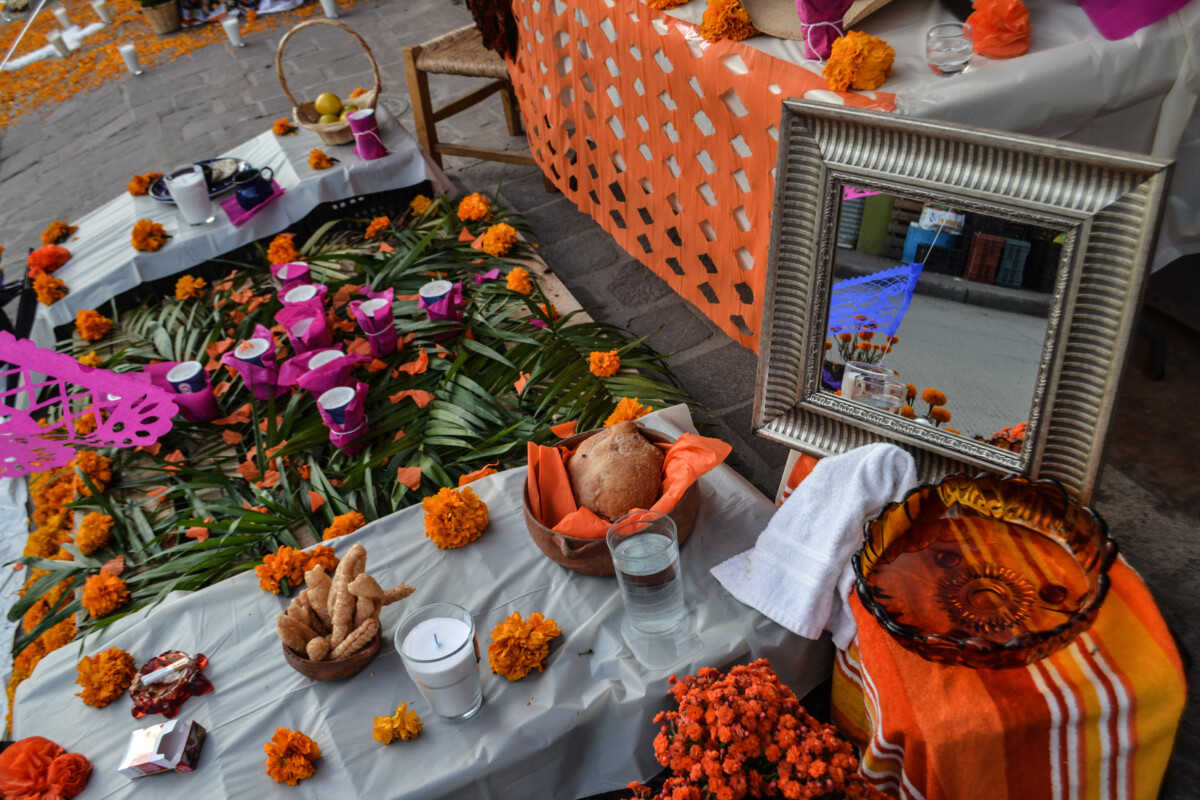
Sample of one of the altars on Morelos Poniente street. Photo: Héctor Ruiz.
The first edition of the festival took place last Sunday, October 31 on Morelos Poniente Street, where in addition to enjoying typical music and spectacular performances by students from the School of Performing Arts of the University of Guadalajara (UdeG), dozens of people witnessed the stories on the 11 altars that the community itself erected along the street.
One of the altars was made by the Ibarra Campos family to honor their father, Goyo. He was described as a cheerful man, a cab driver, who enjoyed life, as well as atole and chicken. These stories brought the audience into the stories themselves of those who lived before them.
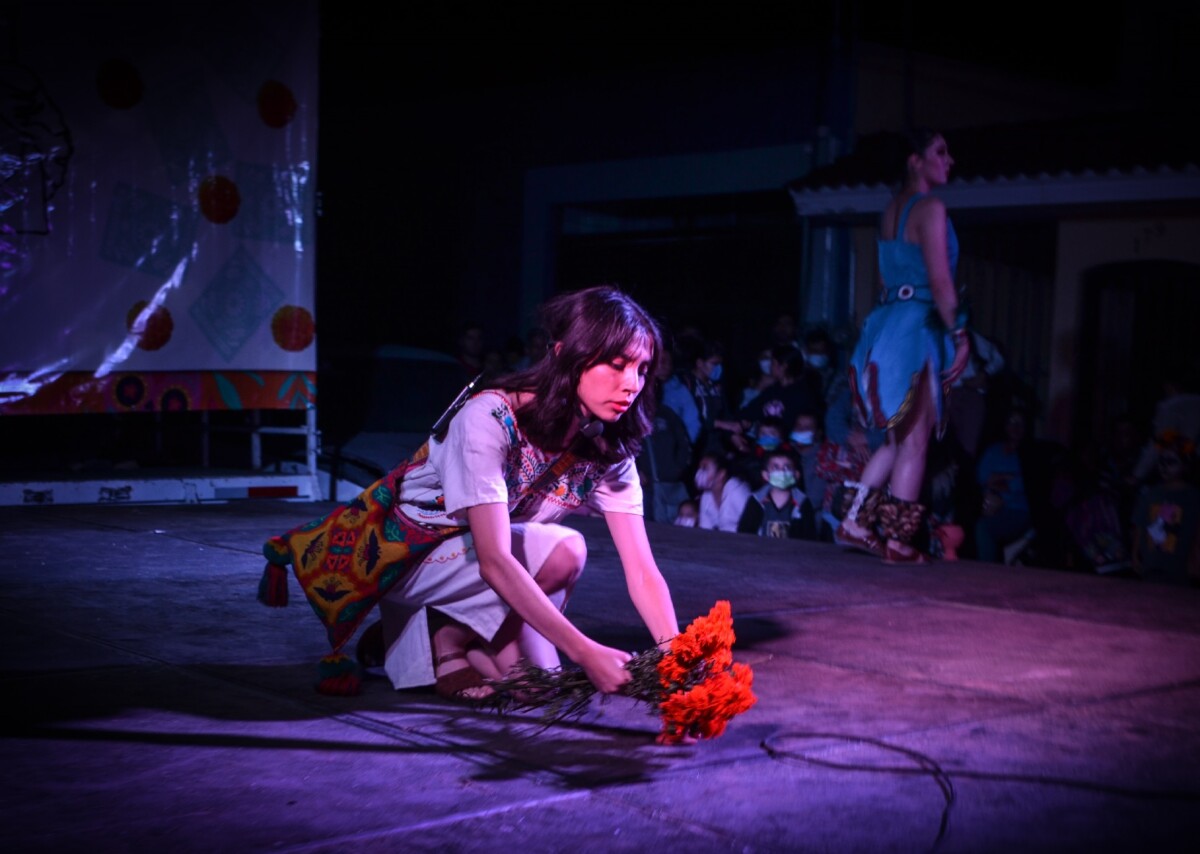
Sample of one of the altars on Morelos Poniente street. Photo: Héctor Ruiz.
«Because we are not only united in death, but also in life,» Carlos said, adding that everyone contributed a little or a lot, like the ladies of the neighborhood, who for two weeks set up the two portals covered with marigold flowers located at both ends of the street.
«It was incredible to see how all the people came together to make the event, from people who supported with 20 pesos, to those who anonymously supported with up to ten thousand pesos,» explained Carlos.
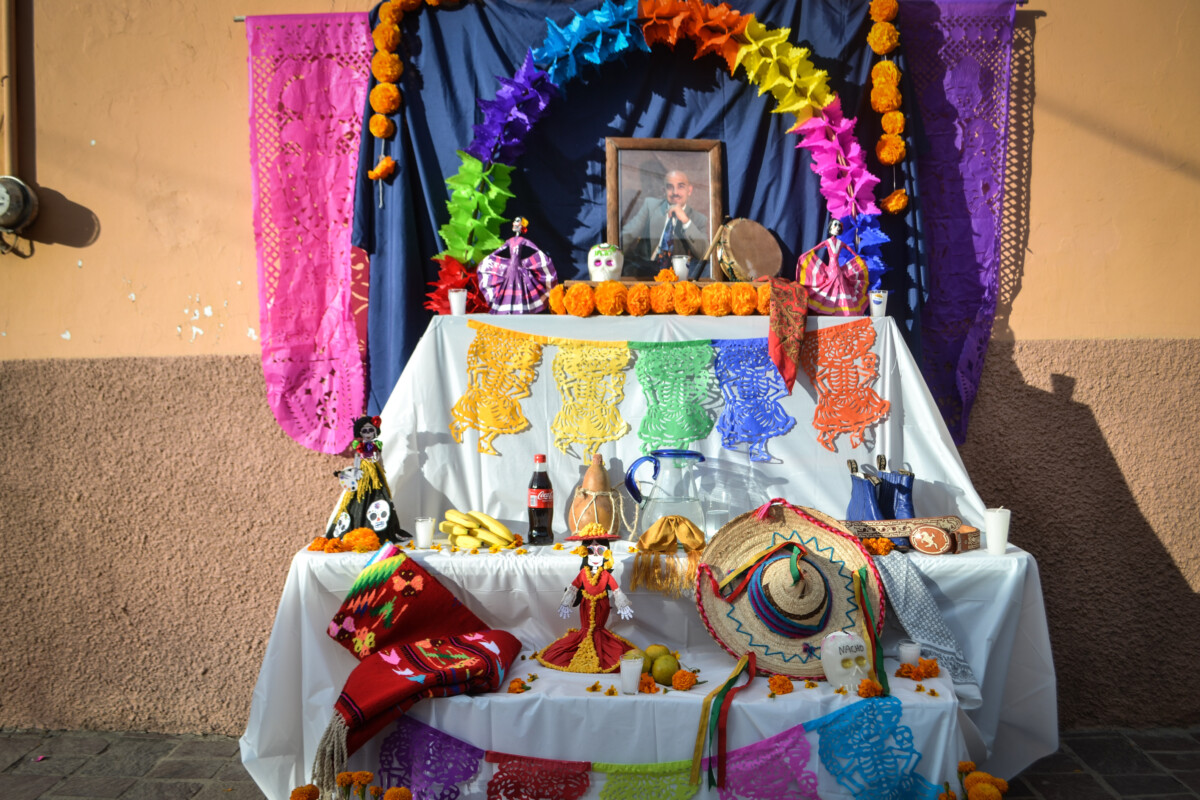
Sample of one of the altars on Morelos Poniente street. Photo: Héctor Ruiz.
«The truth is I didn’t know what to expect, I was in the plaza and I started to hear that they were coming here, so I came to see what was going on and I really had a good time», commented Ramón. He said that he couldn’t stop laughing from the Chiapas death jokes in one of the plays.
The first edition of the festival in commemoration of the Day of the Dead was packed with a large turnout which exceeded all the expectations of the organizers and the community which longed to celebrate this date after a year of inactivity.
Translated by Kerry Watson.
Anuncian la creación de un segundo Muro de los Muertos
Efrén González antes del encendido del Muro de los Muertos.
Sofía Medeles (Ajijic, Jal.)- Con la noticia de realizar una obra similar, es como el pintor Efrén González encendió las velas de las mil 600 calaveras que conforman su instalación artística, El Muro de los Muertos, ubicada en una de las paredes de la escuela Marcos Castellanos.
El “nuevo muro de los muertos”, estará ubicado en La Ladrillera, cerca de su domicilio, al poniente de la pintoresca población, informó Efrén a los cientos de asistentes que llegaron a apreciar el encendido de velas en el evento del 2 de noviembre, que como cada año contó con presentaciones culturales.
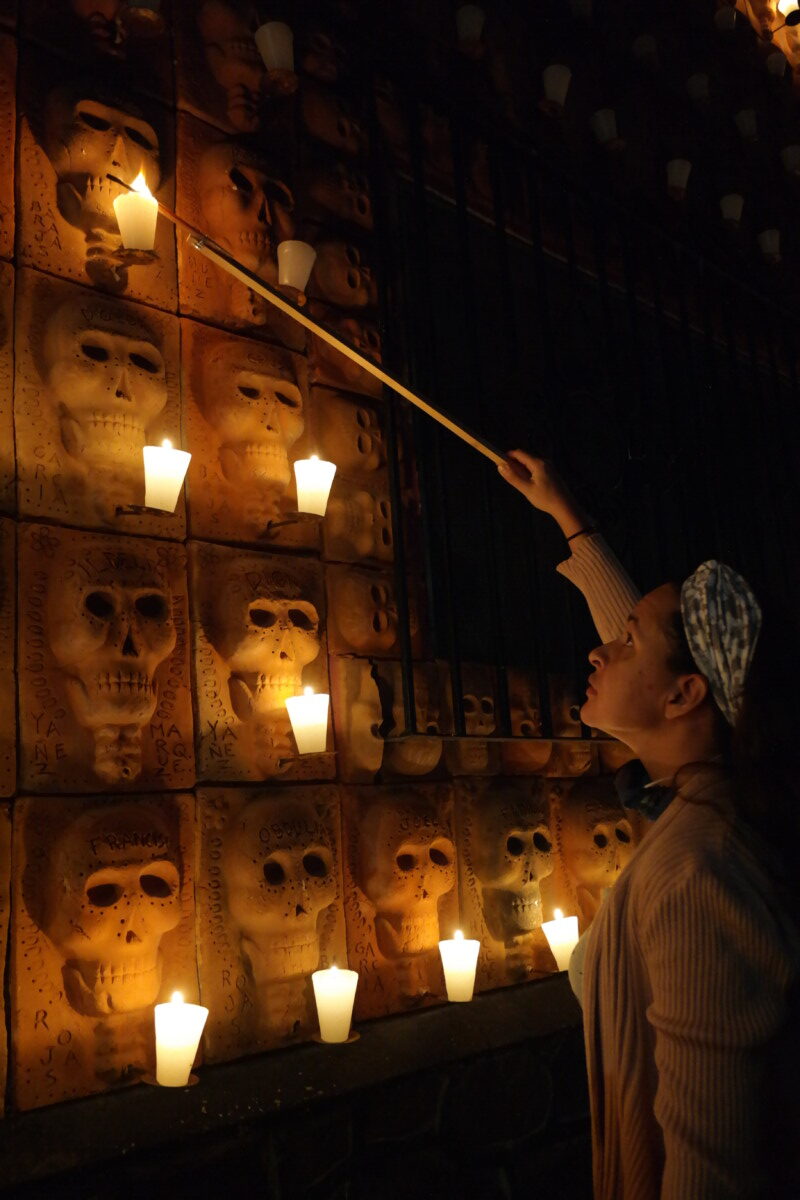
Las velas en la instalación artística son encendidas por distintas personas.
Efrén detalló que se le dio la autorización de realizar un muro similar a las afueras de Ajijic, pero más pequeño que el ubicado en uno de los muros de la primaria Marcos Castellanos, el cual albergaría 800 piezas de barro, diferencia del primero, que cuenta con mil 600 calaveras de barro.
“Recurriré primero a mis vecinos, porque son quienes merecen primero el espacio, después, todas las personas de Ajijic o que han tenido algo que ver con Ajijic”, sentenció Efrén en el acontecimiento.
Finalizó aseverando que no cobrará por plasmar los nombres de quienes quieran estar en el nuevo muro; sin embargo, le cuesta mucho hacerlo, por lo que pidió que fueran generosos con el proyecto.
Volvió el festejo y color al panteón de Ajijic
Los días 1 y 2 de noviembre, el panteón estuvo abierto con un horario de las 8:00 am a las 8:00 pm y se mantuvo un filtro sanitario de acceso.
Sofía Medeles (Ajijic, Jal.)- A diferencia del año pasado cuando el panteón municipal sólo permitió ingresar para limpiar las lápidas, este año la gente pudo pasar más tiempo en el cementerio, decorar las tumbas de sus familiares que ya se adelantaron y pasar un rato de convivencia.
Durante dos días, 1 y 2 de noviembre, las puertas del panteón se mantuvieron abiertas desde las 8:00 de la mañana hasta las 8:00 de la noche. Se mantuvo un estricto filtro sanitario en la entrada, se exigió a los asistentes el uso de cubrebocas y se proporcionó gel sanitizante. Además, se contó con la asistencia de protección civil.
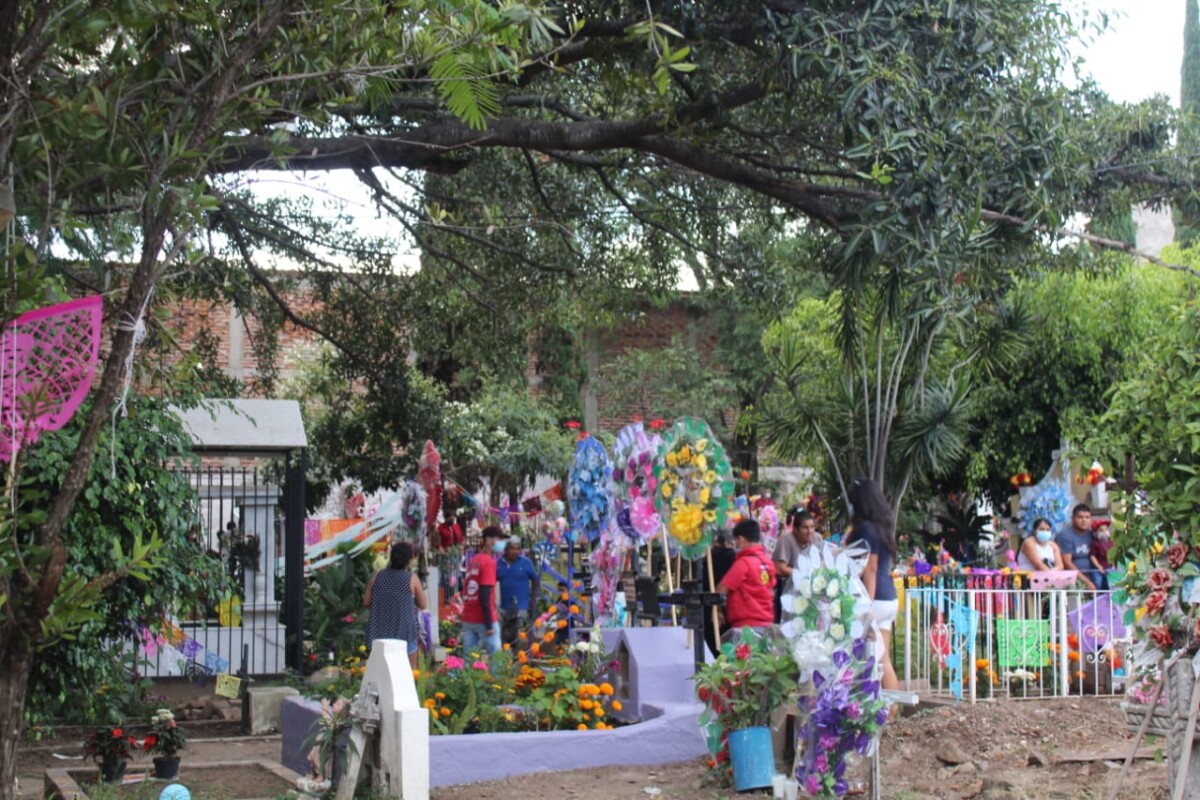
Por todos lados, el panteón se veía lleno de color, entre coronas de flores, papel picado, catrinas, globos, ofrendas, etcétera.
“Es una bonita tradición, que año con año tratamos de que no se pierda, además de ser un momento de convivencia con nuestros vivos y nuestros muertos. A muchos de mis conocidos que me encontré aquí, nos alegró que este año fueran más accesibles en el ingreso y pudiéramos permanecer por más tiempo. Además, nos recibieron con el panteón bien limpio”, destacó uno de los ajijitecos que se encontraba en el panteón.
En el interior del cementerio, las personas se dedicaron tanto a las labores de limpieza y decoración de tumbas, así como sentadas y conviviendo entre familias. Todas las tumbas, incluso las más viejas y olvidadas, tenían al menos una flor. Mientras que en las afueras del panteón se observó la venta de flores y comida.
El Encargado de Despacho, Maximiliano “Max” Macías Arceo, señaló que elementos de protección civil y seguridad pública estuvieron dando rondines dentro del panteón. También, dijo que no hubo percances y la gente atendió las indicaciones y respetó el horario de servicio. “No se puede decir que se cerró como tal, porque falta la puerta del arroyo, pero a la hora (del cierre) se le invitó a la gente a retirarse y no hubo problemas. No hubo altercados ni percances”, aseveró Maximiliano “Max” Macías.
Asimismo, el día 2 de noviembre el panteón cerró una hora más tarde por orden del Ayuntamiento de Chapala, para que las familias tuvieran la oportunidad de dejar sus tumbas listas y limpias de la basura que pudiesen haber generado durante esa tarde.
Redujeron actividades culturales, pero el Festival Vida y Muerte continuó
Altar realizado por estudiantes de la Preparatoria Regional de Chapala en las instalaciones deportivas de la institución. Foto: Sofía Medeles.
Jazmín Stengel.- Debido a que no se contaba con la certeza de que se permitiría realizar actividades culturales por el Día de Muertos, la Preparatoria Regional de Chapala comenzó la organización del Festival Vida y Muerte con solo dos meses de anticipación, lo que redujo las actividades culturales y el interés de los participantes.
Como mencionó el profesor David Castellanos, el festival que lleva realizándose desde hace 39 años ininterrumpidos, regularmente se planeaba con cuatro meses de anticipación. Esto incluye la preparación de los 48 altares concursantes y otros concursos como el de fotografía y calaveras que este año fueron omitidos, debido a la poca recepción de material digital que se obtuvo durante la convocatoria, según datos del maestro Rommel Ney González Aldrete.
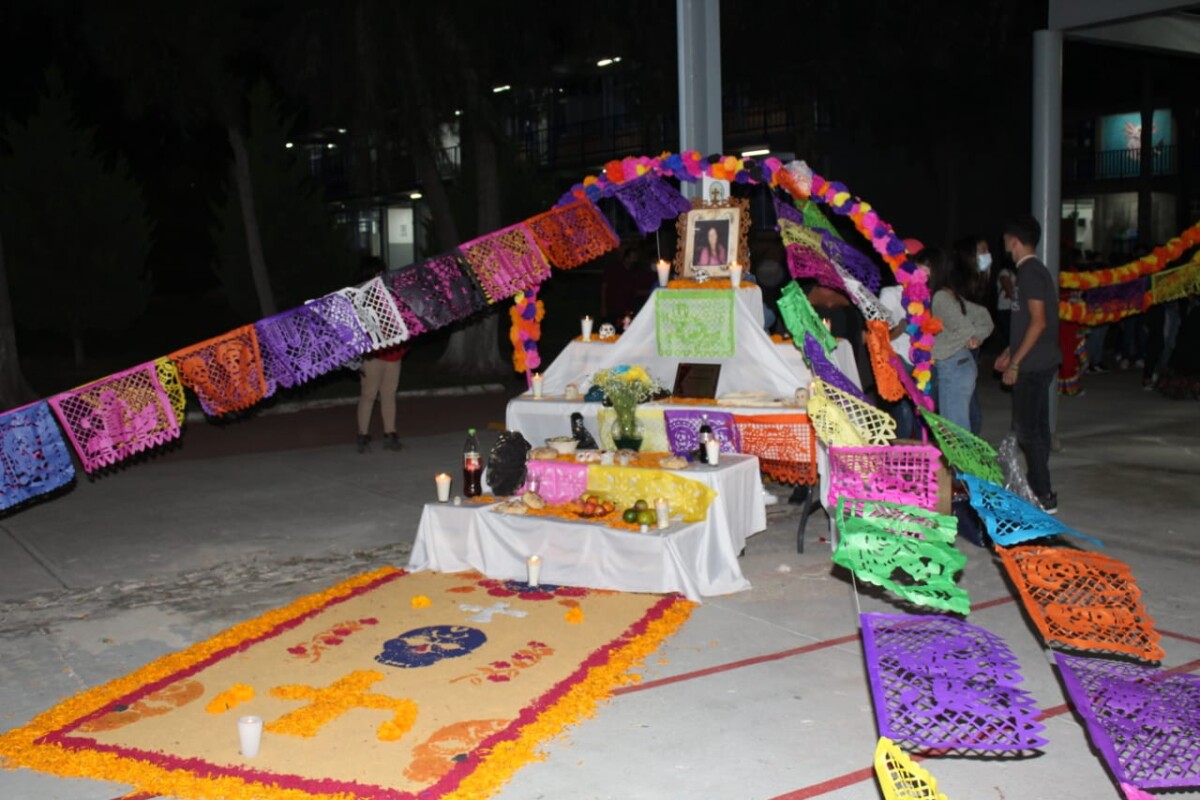
Otro altar realizado por el alumnado en su último año de participación. Foto: Sofía Medeles.
Con solo 13 altares y sin concurso entre los estudiantes, por segundo año consecutivo se realizó el pasado lunes primero de noviembre el Festival Vida y Muerte dentro de las instalaciones de la preparatoria utilizando los espacios recreativos y deportivos de la misma. Solo a alumnos del quinto y sexto semestre se les permitió participar en esta ocasión – debido al reducido espacio – y a diferencia de otros años se montó un altar por grupo, explicó el maestro David Castellanos.
El cambio de dinámica de las festividades en los últimos años ha provocado un creciente desinterés tanto en el alumnado como entre los docentes y administrativos voluntarios. Esto fue notorio en la plataforma digital que la universidad creó en Google para el Festival Vida y Muerte, donde el año pasado se recibieron un sin número de participaciones, mientras que este año ni a la mitad llegaron. (La presentación digital puede apreciarse escaneando el código QR anexado a este artículo).
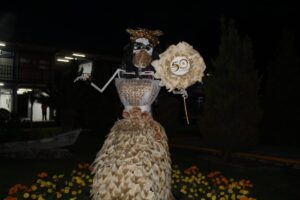
También se realizaron calaveras para complementar la exhibición.
Ya se habló con el presidente municipal Alejandro de Jesús Aguirre Curiel, “de manera personal pedí se siguieran respetando las celebraciones de los días 31, 1 y 2 de noviembre, como se hacían antes, para poder volver a realizar el festival ya sea en la calle 5 de Mayo o sobre la avenida principal de la cabecera municipal, si la pandemia lo permite”, señalo David Castellanos organizador de las mismas, quien obtuvo como respuesta un, “lo tomaremos en cuenta”.
Otra vez se quemó el Monumental Altar de San Juan Cosalá
Por segundo año consecutivo se incendió el gran altar apostado sobre el kiosco de San Juan Cosalá. Foto: Cortesía.
Héctor Ruiz Mejía.- Por segundo año consecutivo se incendió el altar monumental del Día de Muertos realizado sobre la estructura del kiosco de San Juan Cosalá; sin embargo, este año, a diferencia del pasado, hay quien asegura que el percance fue ocasionado de manera intencional, caso de Luis Guzmán, coordinador del evento “Paseo de las Ánimas”, realizado el primero de noviembre.
El incendio que se suscitó durante la madrugada del 2 de noviembre, no fue del conocimiento de los organizadores hasta la mañana siguiente, a decir de Luis Guzmán.
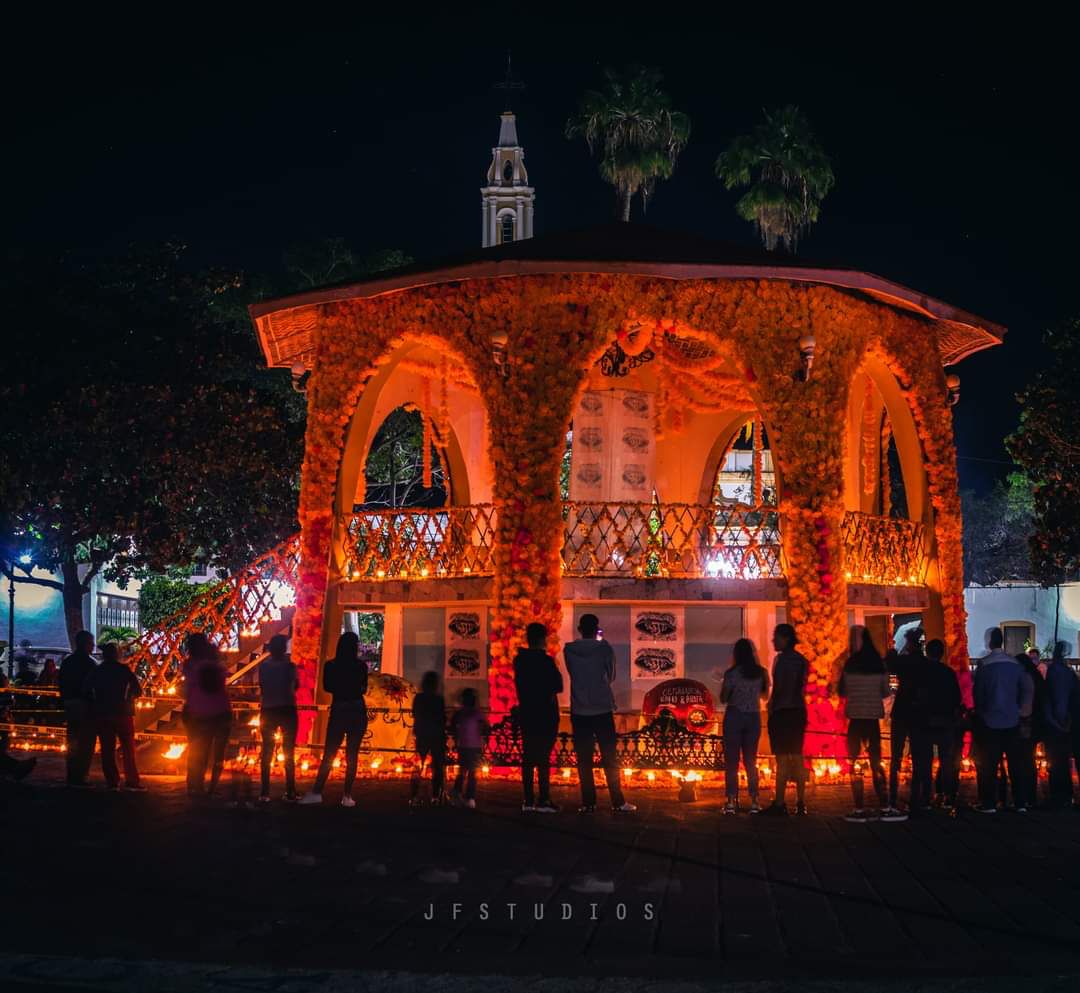
Así lucía el kiosco de San Juan Cosalá antes de ser incendiado intencionalmente. Foto: JF STUDIOS
“Esto no es sólo una ofensa para mí o para mi equipo, sino para toda la comunidad, pues fueron los propios habitantes quienes ayudaron a decorar, a que el festival fuera una realidad”, explicó el entrevistado que estaba consternado respecto a la situación.
De acuerdo a la versión de Luis, el incendio fue ocasionado tras la experiencia que dejó el incendio accidental del festival pasado por una veladora que le prendió fuego al altar; por lo que este año se tomaron todas la precauciones posibles, y él junto con su equipo revisaron todo antes de irse.
“Yo personalmente apagué todas las veladoras, me cerciore que no quedara nada prendido y respecto a los cables, no dejamos ni uno solo, precisamente queriendo evitar algún tipo de corto circuito, revisamos todo; esto, tristemente fue intencional”, aseguró Luis, vía telefónica.
Así, con la resignación y la molestia de la comunidad, el trabajo de los habitantes de San Juan Cosalá que tomó aproximadamente dos semanas cubrir todo el kiosco de flores de Cempasúchil se redujo a cenizas en una sola noche.
© 2016. Todos los derechos reservados. Semanario de la Ribera de Chapala

